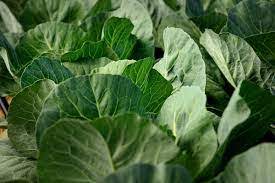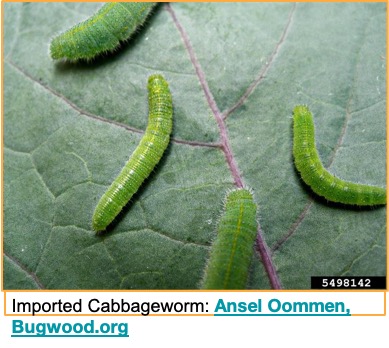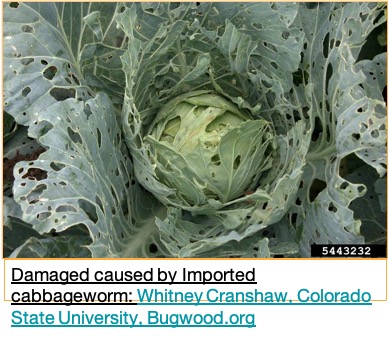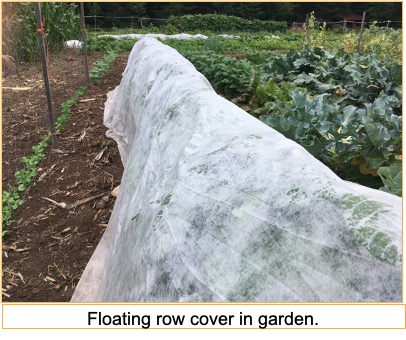Worms in Collards
go.ncsu.edu/readext?892727
en Español / em Português
El inglés es el idioma de control de esta página. En la medida en que haya algún conflicto entre la traducción al inglés y la traducción, el inglés prevalece.
Al hacer clic en el enlace de traducción se activa un servicio de traducción gratuito para convertir la página al español. Al igual que con cualquier traducción por Internet, la conversión no es sensible al contexto y puede que no traduzca el texto en su significado original. NC State Extension no garantiza la exactitud del texto traducido. Por favor, tenga en cuenta que algunas aplicaciones y/o servicios pueden no funcionar como se espera cuando se traducen.
Português
Inglês é o idioma de controle desta página. Na medida que haja algum conflito entre o texto original em Inglês e a tradução, o Inglês prevalece.
Ao clicar no link de tradução, um serviço gratuito de tradução será ativado para converter a página para o Português. Como em qualquer tradução pela internet, a conversão não é sensivel ao contexto e pode não ocorrer a tradução para o significado orginal. O serviço de Extensão da Carolina do Norte (NC State Extension) não garante a exatidão do texto traduzido. Por favor, observe que algumas funções ou serviços podem não funcionar como esperado após a tradução.
English
English is the controlling language of this page. To the extent there is any conflict between the English text and the translation, English controls.
Clicking on the translation link activates a free translation service to convert the page to Spanish. As with any Internet translation, the conversion is not context-sensitive and may not translate the text to its original meaning. NC State Extension does not guarantee the accuracy of the translated text. Please note that some applications and/or services may not function as expected when translated.
Collapse ▲ It’s fall and that means collard greens, cabbages, and other leafy greens will soon be ready for harvest. This is especially important for those folks who desire to have a traditional Thanksgiving meal with an NC staple crop like collards. However, warm temperatures are still present in eastern NC which means all of our late-season pests are abundantly present. This includes numerous worms like imported cabbageworms, diamondback moths, and cabbage loopers. Let us discuss a few simple steps we can take to help protect our cherished greens from these hungry pests.
It’s fall and that means collard greens, cabbages, and other leafy greens will soon be ready for harvest. This is especially important for those folks who desire to have a traditional Thanksgiving meal with an NC staple crop like collards. However, warm temperatures are still present in eastern NC which means all of our late-season pests are abundantly present. This includes numerous worms like imported cabbageworms, diamondback moths, and cabbage loopers. Let us discuss a few simple steps we can take to help protect our cherished greens from these hungry pests.
 Worms (caterpillars) are the immature larval stage of various moth and butterfly species that directly feed on the leaves of many crucifer crops (collards, cabbage, broccoli, etc.). Most of these insects overwinter within or near the crop debris from previous seasons, so a good fall garden cleanup will help to reduce pest numbers in the spring.
Worms (caterpillars) are the immature larval stage of various moth and butterfly species that directly feed on the leaves of many crucifer crops (collards, cabbage, broccoli, etc.). Most of these insects overwinter within or near the crop debris from previous seasons, so a good fall garden cleanup will help to reduce pest numbers in the spring.
 Since worms hatch from tiny eggs laid by moths and butterflies, their presence often goes unnoticed until they begin to grow and devour holes in leaves. These larvae are also camouflaged, which helps them to remain well hidden. The imported cabbageworm, for example, is a velvet green color that is easily overlooked. Often for every one imported cabbageworm you find, you have probably missed several. These worms will also hide in the buds and undersides of leaves making them difficult to see or treat with insecticide.
Since worms hatch from tiny eggs laid by moths and butterflies, their presence often goes unnoticed until they begin to grow and devour holes in leaves. These larvae are also camouflaged, which helps them to remain well hidden. The imported cabbageworm, for example, is a velvet green color that is easily overlooked. Often for every one imported cabbageworm you find, you have probably missed several. These worms will also hide in the buds and undersides of leaves making them difficult to see or treat with insecticide.
Control measures might include using a physical barrier to exclude moths and butterflies, such as a lightweight floating row cover that is placed directly over the growing plants. This lightweight material is available from garden suppliers and is often used to aid in cold protection. However, with warm temperatures still around, you must be careful not to overheat your plants while using row covers.
Garden insecticides can be very useful to control worms. Carefully read product labels when applying insecticides, especially around leafy greens. The harvest interval (time between application and harvest) should be monitored closely, since you will be consuming the foliage that is treated. Also, leafy greens have a waxy covering that causes many products dissolved in water to bead off the plant. For this reason, a surfactant might be recommended to aid in the retention of the product on the leaf surface. A common spreader/sticker product is often used for this purpose. Lastly, pay attention to the growth of the plant. Since most garden insecticides used for worms requires direct contact or feeding by the insect, reapplication will be required. As the plant grows and pushes out new leaves from its buds, this new leaf material will be unprotected from any previous application. This means a follow-up application may be needed a few weeks later as long temperatures remain warm and insects are active. Read the label directions for the recommend reapplication period.
Common garden insecticides often used for worms include organically approved products like B.t (Bacillus thuringiensis, Dipel), Spinosad (Captain Jack’s Dead Bug Brew), and conventional insecticides like pyrethroids (Ortho Bug Clear), and Carbaryl (Sevin). Read and follow label directions when mixing and applying these insecticides. Mixing more product than is recommended will not aid in effectiveness. Thorough coverage is important to reach most insects, and don’t forget the underside of leaves. Hand removal of insects is also possible, but it can be difficult to remove them all. Be sure to wash crops after harvest and consume them in a timely manner.
If you follow these recommendations, you should be able to protect your fall harvest from hungry pests. If you have additional questions about controlling worms in your garden then please contact Daniel Simpson at 252-745-4121 or daniel_simpson@ncsu.edu.




